#precise robotically implanted brain computer interface
Explore tagged Tumblr posts
Text
[ Neuralink Wants To Put A Chip In Your Head ]
#elon musk#neuralink#brain chip implant#brain chip#prime#quadriplegia#als#bcis#n1 implant#r1 robot#FDA#animal trials#violations#animal cruelty#fight night champion#fight night champion online#precise robotically implanted brain computer interface
0 notes
Text
Precise robot implanted brain interface developed by Musk NEURALINK: PRIME
Neurink was founded by Elon Musk in 2016 to help patients with paralysis and neurological diseases in the short term, and reduce the risk of artificial intelligence to humanity in the long run. Neuralink’s mission is to develop brain interface (BCI) that treats various brain diseases. The ultimate goal is to create a full -brain interface that can connect biological and artificial intelligence to…

View On WordPress
0 notes
Text
Neuralink project
Neuralink Project: A Deep Dive
Neuralink, founded by Elon Musk in 2016, is a neurotechnology company working on a revolutionary brain-computer interface (BCI) system. This system aims to bridge the gap between the human brain and computers, allowing for a new kind of interaction. Let's delve deeper into the details of this ambitious project.
Goals of Neuralink:
Medical Applications:
Restore lost abilities: The primary focus currently is on helping people with paralysis or neurological conditions like ALS regain control over their environment and communication. By deciphering brain signals, Neuralink hopes to allow users to control prosthetic limbs, wheelchairs, or computer interfaces directly with their thoughts.
Treat brain disorders: Neuralink's technology has the potential to treat various brain disorders by directly monitoring and potentially stimulating brain activity.
Human Augmentation: Beyond medical applications, Neuralink envisions a future where BCIs can enhance human capabilities. This could involve:
Direct memory access: Uploading and downloading memories or knowledge could become a reality.
Brain-to-brain communication: Imagine telepathic communication facilitated by BCIs.
Technical aspects of Neuralink:
Neuralink Device: The core of the project is a surgically implanted chip. This coin-sized device contains tiny electrodes that interface with the brain tissue.
Electrode threads: Neuralink uses ultra-thin threads containing multiple electrodes. These threads are inserted into specific brain regions to record neural activity.
Neurosurgical Robot: A specialized robot is used for precise and minimally invasive implantation of the threads.
Wireless communication: Neural signals are wirelessly transmitted to an external device for processing and decoding.
Challenges:
Biocompatibility: Ensuring the long-term safety and compatibility of the implant with brain tissue is a crucial challenge.
Signal processing: Decoding complex brain signals into understandable commands for external devices requires significant advancements in machine learning and artificial intelligence.
Ethical considerations: The potential for brain augmentation raises ethical concerns about privacy, memory manipulation, and human identity.
Current Status:
Animal Testing: Neuralink has conducted experiments on animals like monkeys, demonstrating the ability to record and interpret brain signals.
Human Trials: As of January 2024, Neuralink has begun human trials with the first implant in a patient with quadriplegia. These initial trials are focused on safety and basic functionality.
The Future of Neuralink:
The Neuralink project is still in its early stages, but it holds immense promise for revolutionizing healthcare and human-computer interaction. While there are significant technical and ethical hurdles to overcome, the potential benefits for people with disabilities and the broader implications for human potential make Neuralink a highly watched project.
2 notes
·
View notes
Text
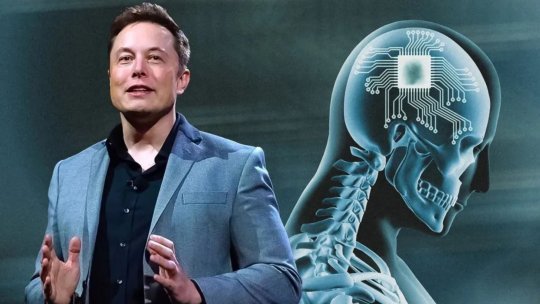
Elon Musk’s Neuralink looking for volunteer to have piece of their skull cut open by robotic surgeon
Elon Musk’s chip implant company Neuralink is looking for its first volunteer who is willing to have a piece of their skull removed so that a robotic surgeon can insert thin wires and electrodes into their brain.
The ideal candidate will be a quadriplegic under the age of 40 who will also for a procedure that involves implanting a chip, which has 1,000 electrodes, into their brain, the company told Bloomberg News.
The interface would enable computer functions to be performed using only thoughts via a “think-and-click” mechanism.
After a surgeon removes a part of the a skull, a 7-foot-tall robot, dubbed “R1,” equipped with cameras, sensors and a needle will push 64 threads into the brain while doing its best to avoid blood vessels, Bloomberg reported.
Each thread, which is around 1/14th the diameter of a strand of human hair, is lined with 16 electrodes that are programmed to gather data about the brain.
The task is assigned to robots since human surgeons would likely not be able to weave the threads into the brain with the precision required to avoid damaging vital tissue.
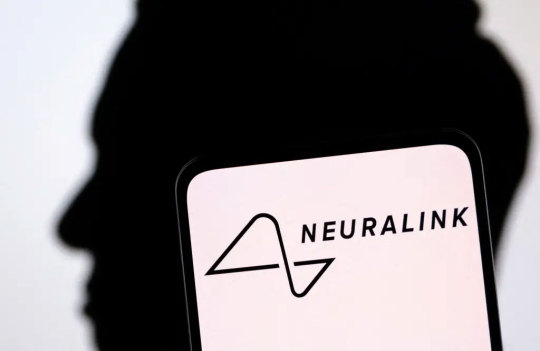
Elon Musk’s brain chip company Neuralink is looking for human volunteers for experimental trials.AP
The electrodes are designed to record neural activity related to movement intention. These neural signals are then decoded by Neuralink computers.
R1 has already performed hundreds of experimental surgeries on pigs, sheep, and monkeys. Animal rights groups have been critical of Neuralink for alleged abuses.
“The last two years have been all about focus on building a human-ready product,” Neuralink co-founder DJ Seo told Bloomberg News.
“It’s time to help an actual human being.”
It is unclear if Neuralink plans to pay the volunteers.
The Post has sought comment from the company.
Those with paralysis due to cervical spinal cord injury or amyotrophic lateral sclerosis may qualify for the study, but the company did not reveal how many participants would be enrolled in the trial, which will take about six years to complete.
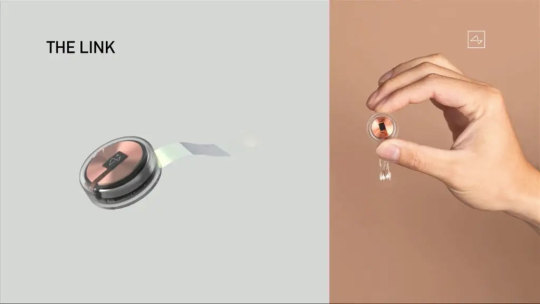
Musk’s company is seeking quadriplegics who are okay with their skull being opened so that a wireless brain-computer implant, which has 1,000 electrodes, could be lodged into their brain.REUTERS
Neuralink, which had earlier hoped to receive approval to implant its device in 10 patients, was negotiating a lower number of patients with the Food and Drug Administration (FDA) after the agency raised safety concerns, according to current and former employees.
It is not known how many patients the FDA ultimately approved.
“The short-term goal of the company is to build a generalized brain interface and restore autonomy to those with debilitating neurological conditions and unmet medical needs,” Seo, who also holds the title of vice president for engineering, told Bloomberg.
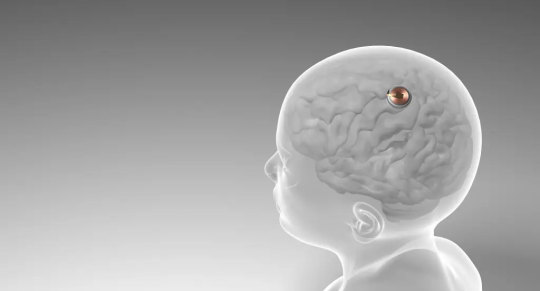
The brain chip device would be implanted underneath a human skull.
“Then, really, the long-term goal is to have this available for billions of people and unlock human potential and go beyond our biological capabilities.”
Musk has grand ambitions for Neuralink, saying it would facilitate speedy surgical insertions of its chip devices to treat conditions like obesity, autism, depression and schizophrenia.
The goal of the device is to enable a “think-and-click” mechanism allowing people to use computers through their thoughts.Getty Images/iStockphoto
In May, the company said it had received clearance from the FDA for its first-in-human clinical trial, when it was already under federal scrutiny for its handling of animal testing.
Even if the BCI device proves to be safe for human use, it would still potentially take more than a decade for the startup to secure commercial use clearance for it, according to experts.
Source: nypost.com
2 notes
·
View notes
Text
Neuroprosthetics Market
Neuroprosthetics Market Size, Share, Trends: Medtronic plc Leads
Integration of Artificial Intelligence and Machine Learning in Neuroprosthetic Devices
Market Overview:
The global neuroprosthetics market is expected to develop at a CAGR of XX% between 2024 and 2031. The market will grow from USD XX billion in 2024 to USD YY billion by 2031. North America now dominates the market, accounting for the vast majority of worldwide sales. Key criteria include the rising prevalence of neurological illnesses, advances in brain-computer interface technologies, and increased investment in neurotechnology research and development.
The neuroprosthetics market is expanding rapidly, owing to an increase in the prevalence of neurological illnesses, technological advancements in neural interfaces, and the growing acceptance of implantable neurostimulation devices. The intersection of neuroscience, biotechnology, and artificial intelligence is broadening the possibilities for restoring and improving neuronal functions via neuroprosthetic therapies.
DOWNLOAD FREE SAMPLE
Market Trends:
The neuroprosthetics market is seeing a considerable increase in the integration of artificial intelligence (AI) and machine learning (ML) technologies. These advanced computational algorithms improve the capabilities of neuroprosthetic devices, allowing for more intuitive control, adaptive learning, and personalised functionality. Artificial intelligence algorithms are being used to improve signal processing, decipher brain patterns, and optimise gadget performance in real time. For example, ML-powered prosthetic limbs may learn and adapt to specific user patterns, resulting in more natural and efficient movement control. According to a Nature Neuroscience study, AI-enhanced brain-computer interfaces outperformed conventional systems in terms of accuracy and response time by 40%. The growing desire for more sophisticated and responsive neuroprosthetic devices that can smoothly connect with the user's nervous system is driving this trend. Major neurotechnology businesses and research organisations are significantly investing in AI and machine learning capabilities, resulting in a new generation of intelligent neuroprosthetics with improved functionality and user experience.
Market Segmentation:
The motor prosthetics category dominates the neuroprosthetics market. These devices, which include brain-controlled robotic limbs, exoskeletons, and functional electrical stimulation systems, provide significant gains in movement and independence for people with motor limitations. The clinical success and obvious influence of motor neuroprosthetics have resulted in broad adoption and further development.
Recent advances in motor neuroprosthetics have strengthened their market position. For example, the creation of high-resolution brain interfaces and powerful decoding algorithms has greatly enhanced the precision and naturalness of prosthetic limb control. A major study published in the New England Journal of Medicine found that a tetraplegic patient using an advanced brain-controlled robotic arm achieved 90% success in complex gripping tasks, nearing natural limb function.
Market Key Players:
Medtronic plc
Boston Scientific Corporation
Cochlear Limited
Second Sight Medical Products, Inc.
Nevro Corp.
NeuroPace, Inc.
Contact Us:
Name: Hari Krishna
Email us: [email protected]
Website: https://aurorawaveintellects.com/
0 notes
Text
Applications of Microprocessors vs Integrated Circuits
Introduction
Microprocessors and integrated circuits (ICs) are fundamental components in modern electronics, powering a vast array of devices and systems. Although they are often mentioned together, they serve different roles and have distinct applications. In this article, we'll explore the unique applications of microprocessors and integrated circuits, highlighting how each contributes to the technology landscape.
Understanding Microprocessors
A microprocessor is an integrated circuit that performs the functions of a computer's central processing unit (CPU). It executes instructions from software programs, handling arithmetic, logic, control, and input/output (I/O) operations. Microprocessors are the brains of many computing devices, making them critical for processing tasks.
Understanding Integrated Circuits
Integrated circuits (ICs) are semiconductor devices that contain multiple electronic components, such as transistors, resistors, and capacitors, all integrated into a single chip. ICs can perform a variety of functions, from simple amplifying signals to complex processing tasks, depending on their design and purpose.
Microprocessor Applications
1. Personal Computers and Laptops
Microprocessors are the heart of personal computers (PCs) and laptops, enabling them to run complex operating systems and software applications. Intel's Core and AMD's Ryzen series are prime examples of microprocessors used in PCs.
2. Servers and Data Centers
In servers and data centers, microprocessors handle massive amounts of data and perform complex computations. They power the infrastructure behind cloud services, internet services, and large-scale databases.
3. Mobile Devices
Smartphones and tablets rely on microprocessors to run mobile operating systems and apps. Processors like Apple's A-series and Qualcomm's Snapdragon series are designed for high performance and efficiency in mobile devices.
4. Embedded Systems
Microprocessors are used in embedded systems found in consumer electronics, automotive control systems, and industrial machines. These systems perform dedicated functions within larger systems, such as controlling airbag deployment in cars or managing industrial robots.
5. Gaming Consoles
Gaming consoles, such as the PlayStation and Xbox, use powerful microprocessors to deliver high-quality graphics and immersive gaming experiences. These processors handle complex game physics, rendering, and AI computations.
Integrated Circuit Applications
1. Consumer Electronics
Integrated circuits are essential in consumer electronics, including televisions, audio systems, and home appliances. They manage various functions, such as signal processing, power management, and user interfaces.
2. Industrial Automation
In industrial automation, ICs control machinery, robotics, and process automation systems. They ensure precise control and monitoring of industrial processes, enhancing efficiency and safety.
3. Automotive Systems
ICs are crucial in automotive systems for functions like engine control, infotainment systems, and advanced driver-assistance systems (ADAS). They improve vehicle performance, safety, and user experience.
4. Telecommunications
Telecommunication devices, such as smartphones, routers, and satellite communication systems, rely on ICs for signal processing, data transmission, and network management. They enable high-speed communication and connectivity.
5. Medical Devices
Medical devices, including diagnostic equipment, patient monitors, and implantable devices, use ICs for accurate measurement, data processing, and control functions. They enhance the reliability and functionality of medical technology.
6. Aerospace and Defense
ICs are used in aerospace and defense applications for navigation systems, communication equipment, and missile guidance systems. They offer high reliability and performance in critical and demanding environments.
Choosing the Right Component
When selecting between microprocessors and integrated circuits, consider the specific requirements of your application. Microprocessors are ideal for general-purpose computing and complex processing tasks, while ICs are suited for specialized functions and integrated solutions. Evaluate factors such as performance, power consumption, cost, and design complexity to make an informed decision.
Conclusion
Microprocessors and integrated circuits are indispensable in modern technology, each serving unique roles in various applications. Understanding their differences and applications can help you choose the right component for your projects, ensuring optimal performance and functionality.
0 notes
Text
Neuralink Rival Sets Brain-Chip Record With 4,096 Electrodes On Human Brain! Precision Expects Its Minimally Invasive Brain Implant To Hit The Market Next Year.
Brain-computer interface company Precision Neuroscience says that it has set a new world record for the number of neuron-tapping electrodes placed on a living human's brain—4,096, surpassing the previous record of 2,048 set last year, according to an announcement from the company on Tuesday.
— Beth Mole | May 28th, 2024
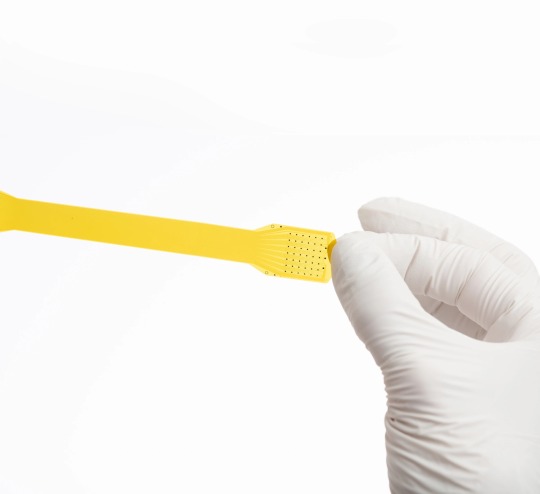
Each of Precision's microelectrode arrays comprises 1,024 electrodes ranging in diameter from 50 to 380 microns, connected to a customized hardware interface.
The high density of electrodes allows neuroscientists to map the activity of neurons at unprecedented resolution, which will ultimately help them to better decode thoughts into intended actions.
Precision, like many of its rivals, has the preliminary goal of using its brain-computer interface (BCI) to restore speech and movement in patients, particularly those who have suffered a stroke or spinal cord injury. But Precision stands out from its competitors due to a notable split from one of the most high-profile BCI companies, Neuralink, owned by controversial billionaire Elon Musk.
Precision was co-founded by neurosurgeon and engineer Ben Rapoport, who was also a co-founder of Neuralink back in 2016. Rapoport later left the company and, in 2021, started rival Precision with three colleagues, two of whom had also been involved with Neuralink.
In a May 3 episode of The Wall Street Journal podcast "The Future of Everything," Rapoport suggested he left Neuralink over safety concerns for the company's more invasive BCI implants.
To move neural interfaces from the world of science to the world of medicine, "safety is paramount," Rapoport said. "For a medical device, safety often implies minimal invasiveness," he added. Rapoport noted that in the early days of BCI development—including the use of the Utah Array—"there was this notion that in order to extract information-rich data from the brain, one needed to penetrate the brain with tiny little needlelike electrodes," he said. "And those have the drawback of doing some amount of brain damage when they're inserted into the brain. I felt that it was possible to extract information-rich data from the brain without damaging the brain." Precision was formed with that philosophy in mind—minimal invasiveness, scalability, and safety, he said.
Neuralink's current BCI device contains 1,024 electrodes across 64 thinner-than-hair wires that are implanted into the brain by a surgical robot. In the first patient to receive an implant, the wires were inserted 3 millimeters to 5 mm into the brain tissue. But, 85 percent of those wires retracted from the patient's brain in the weeks after the surgery, and some of the electrodes were shut off due to the displacement. Neuralink is reportedly planning to implant the wires deeper—8 mm—in its second patient. The Food and Drug Administration has reportedly given the green light for that surgery. The Utah Array, meanwhile, can penetrate up to 1.5 mm into the brain.
Precision's device does not penetrate the brain at all, but sits on top of the brain. The device contains at least one yellow film, said to be a fifth the thickness of a human hair, that contains 1,024 electrodes embedded in a lattice pattern. The device is modular, allowing for multiple films to be added to each device. The films can be slipped onto the brain in a minimally invasive surgery that requires cutting only a thin slit in the skull, which the yellow ribbon-like device can slide through, according to Precision. The film then conforms to the surface of the brain. The processing unit that collects data from the electrodes is designed to sit between the skull and the scalp. If the implant needs to be removed, the film is designed to slide off the brain without causing damage.
In April, a neurosurgery team from the Mount Sinai Health System placed one of Precision's devices containing four electrode-containing films—totaling 4,096 electrodes—onto the brain of a patient who was having surgery to remove a benign brain tumor. While the patient was asleep with their skull opened, Precision researchers used their four electrode arrays to successfully record detailed neuronal activity from an area of approximately 8 square centimeters of the brain.
"This record is a significant step towards a new era," Rapoport said in a press release Tuesday. "The ability to capture cortical information of this magnitude and scale could allow us to understand the brain in a much deeper way."
The test of the implant marks the 14th time Precision has placed its device on a human brain, according to CNBC, which was present for the surgery in New York. Precision says that it expects to have its first device on the commercial market in 2025.
#ARS Technica#Step Forward#Neuralink#Brain 🧠-Chip#Electrodes | Human Brain 🧠#Minimally Invasive#Brain 🧠 | Implant#Brain-Computer | Interface Company | Precision Neuroscience
0 notes
Text
The Future of Brain Health: Innovating Therapies through Neural Interfaces
Hi readers,
I’ve always been mesmerized by the possibilities that lie in the future, especially when it comes to new therapies for mental health and degenerative brain diseases. One of the most inspiring people in this field is Elon Musk and his groundbreaking work with Neuralink. His innovations sparked my creativity and led to the creation of my latest novel, "Code of Ascension." Today, I want to give you an easy-to-understand look at how Neuralink works and how it inspired the NeuralSeed technology in my book. I’ll also share a glimpse into the thrilling duality of good and evil that fuels the plot of my novel.
How Neuralink Works: A Layman's Guide
Imagine being able to control a computer or a smartphone just by thinking about it. Sounds like science fiction, right? Well, Neuralink is making it a reality. Here’s how it works in simple terms:
Tiny Electrodes:
Neuralink involves implanting super-small electrodes into the brain. Think of these as tiny wires that can listen to your brain's electrical signals or even chat back by sending mild electrical pulses.
High Precision Surgery:
To place these electrodes accurately, a robot performs the surgery. It’s like having a sewing machine for the brain, one that’s incredibly precise, avoiding important blood vessels and reducing damage.
Reading Brain Signals:
Once implanted, these electrodes pick up the electrical signals your neurons (brain cells) fire. Neurons communicate via these tiny electrical charges, kind of like sending texts to each other.
Decoding and Interpreting Data:
The device then amplifies and processes these signals using an onboard computer chip. The chip decodes the neural signals and interprets them, converting them into data that computers can understand.
Wireless Communication:
The data is wirelessly transmitted to external devices like computers or smartphones. This means you can potentially control these devices just by thinking about specific actions.
The Evolution of NeuralSeed in "Code of Ascension"
Elon Musk’s Neuralink has been an inspiration for the sci-fi realm of my new novel, "Code of Ascension." I took the basic concept and expanded it into something even more innovative and exciting: NeuralSeed.
Foundation and Inspiration:
NeuralSeed began as a hope-filled project to address some of the most challenging brain disorders. Picture a device that not only reads brain signals but also helps repair and regenerate damaged brain tissue.
Flexibility and Biocompatibility:
Unlike traditional implants, NeuralSeed uses ultra-thin, flexible electrodes that can seamlessly integrate into the brain without causing much damage. These tiny threads are made from materials that the brain can easily accept, reducing the risk of rejection and complications.
Advanced AI Integration:
But we didn't stop at just wiring the brain. The real magic of NeuralSeed lies in its advanced artificial intelligence (AI). The AI learns from the neural data it gathers, adapting and optimizing its responses to each individual's unique brain patterns. This means personalized treatment that evolves with the patient’s needs.
Therapeutic Applications:
For mental health, NeuralSeed can detect harmful neural patterns associated with conditions like anxiety and depression, and immediately counteract them with specific electrical pulses, helping balance and improve mental states. For degenerative diseases like Alzheimer's or Parkinson's, the device stimulates neuron growth and encourages the brain to form new connections, essentially helping it heal and regain lost functions.
The Duality of Good and Evil
Every groundbreaking technology has the potential for both good and evil. In "Code of Ascension," this duality forms the core of the conflict. While NeuralSeed holds the promise of curing diseases and improving mental health, it also becomes a tool of a powerful clandestine organization—The Order.
The Benevolent Side:
Alexandra Mercer, the protagonist and innovative founder of DyadTech, envisions NeuralSeed as a beacon of hope. She and her team strive to push the boundaries of medical science, offering previously unimaginable solutions to some of humanity's most daunting neurological challenges.
The Malevolent Force:
Opposing Alexandra's noble goals is The Order of the Zero Point, an ancient and secretive group with a dark agenda. They seek to use NeuralSeed for their own sinister purposes, manipulating the technology to gain control over people’s minds and, ultimately, leverage it in their quest for world domination.
High Stakes and Global Consequences:
The Order's plan, known as Project EPOCH, encompasses a series of catastrophic events designed to thrust the world into chaos. They wield the altered NeuralSeed technology to not only disrupt global systems but also to implant mind-controlling techniques into unsuspecting individuals, including influential leaders. The stakes are astronomical—our heroes must thwart these plans to save not only NeuralSeed but also the very fabric of society.
A Final Thought Neural interfaces like those envisioned by Neuralink, and the fictional NeuralSeed in "Code of Ascension," embody the incredible potential of technological innovation. They offer a tantalizing glimpse into how advanced AI and neural technology could revolutionize medicine, improving mental health and combating degenerative brain diseases.
However, with such power comes the ethical imperative to use it responsibly. In my novel, I explore this duality. While NeuralSeed is a symbol of hope and healing, it also becomes a tool of control and manipulation for The Order.
As you dive into the world of "Code of Ascension," I hope you’ll be intrigued by the possibilities, think deeply about the ethical challenges, and enjoy the thrilling ride of innovation clashing with malevolent ambition.
Thank you for joining me on this adventure through the future of brain health, innovation, and the timeless battle between good and evil.
Happy reading,
Doug Bachelor
0 notes
Text
Neuralink Celebrates Successful Brain-Chip Implantation in Landmark Human Trial
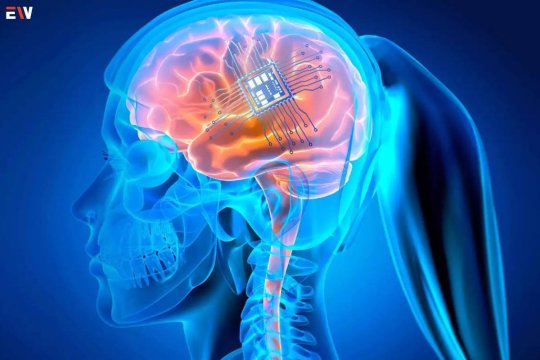
In a groundbreaking achievement, Neuralink, the brain-chip startup founded by billionaire entrepreneur Elon Musk, announced the successful implantation of its brain-computer interface (BCI) in a human patient on Sunday. Elon Musk revealed that the first recipient is recovering well after undergoing the procedure, marking a significant step forward in the company’s pursuit of aiding patients dealing with paralysis and various neurological conditions.
Promising Results and Neuron Spike Detection
Elon Musk expressed optimism about the initial results, stating on the social media platform X that the implanted device demonstrated promising neuron spike detection. Neuron spikes, as defined by the National Institute of Health, represent the electrical and chemical signals used by cells to convey information within the brain and throughout the body.
FDA Clearance and Human Trials
Neuralink received clearance from the U.S. Food and Drug Administration (FDA) last year to commence its first human trial, a pivotal moment for the startup’s mission to address paralysis and neurological disorders. The company had previously gained approval for human trial recruitment in September. The trial involves the use of a surgical robot to precisely position the BCI implant in the brain region responsible for controlling movement intentions. The primary objective is to empower individuals to control a computer cursor or keyboard solely through their thoughts.
Telepathy: Neuralink’s First Product
Elon Musk unveiled that the inaugural product resulting from Neuralink’s efforts would be named “Telepathy.” The startup’s PRIME Study, a part of the trial, focuses on evaluating the safety of the wireless brain-computer interface and the surgical robot used in the implantation procedure.
Scrutiny and Challenges
While celebrating the successful implantation, Neuralink faces scrutiny over safety concerns. The company recently incurred fines for violating U.S. Department of Transportation rules related to the transportation of hazardous materials. Furthermore, four lawmakers urged the U.S. Securities and Exchange Commission to investigate whether Musk misled investors about the technology’s safety, citing veterinary records revealing issues such as paralysis, seizures, and brain swelling in monkeys with Neuralink implants.
Musk responded to these concerns, asserting that no monkeys had died due to Neuralink implants. He explained that the choice of “terminal” monkeys was made to minimize risks to healthy ones, emphasizing the commitment to ensuring the safety and efficacy of the groundbreaking technology.
Despite the challenges, Neuralink’s successful human implantation brings hope for advancements in neuroscience and the potential for groundbreaking solutions to improve the lives of individuals grappling with paralysis and neurological disorders. The company’s continued progress and commitment to safety will undoubtedly be closely monitored as it paves the way for a new era in brain-computer interface technology.
Curious to learn more? Explore our articles on Enterprise Wired
0 notes
Text
Neuralink: via alla ricerca di volontari per farsi impiantare chip nel cervello

Neuralink, l'azienda di Elon Musk specializzata negli impianti cerebrali, ha annunciato di aver ottenuto l'approvazione per il suo primo studio clinico sull'uomo. L'obiettivo è quello di testare la tecnologia Neuralink, che fa parte dell'emergente filone delle interfacce cervello-computer e che ha tra i suoi obiettivi più nobili quello di aiutare le persone paralizzate a controllare vari dispositivi. Neuralink sta cercando volontari che vogliano sottoporsi ai primi test.Lo studio sperimentale si chiama Prime, in verità un acronimo: Precise Robotically Implanted Brain-Computer Interface. Durerà sei anni e verrà testato il robot che fa l'impianto e il software che gestisce il congegno. I partecipanti al Prime parteciperanno prima a uno studio di screening per valutare la loro idoneità. Non ha specificato quanti volontari sta cercando, né quando avrà inizio lo studio; verranno scelti per partecipare a Prime i pazienti con quadriplegia a causa di lesione del midollo spinale o sclerosi laterale amiotrofica, perdita della vista e dell'udito, incapacità di parlare. Ha lavorato per creare un'interfaccia cervello-computer completamente impiantabile e wireless che possa registrare e trasmettere segnali cerebrali senza fili a un'app che decodifica l'intenzione di movimento. Nel trial, un robot verrà utilizzato per posizionare chirurgicamente i filamenti ultra-sottili e flessibili dell'impianto nel cervello. L'azienda di Elon Musk ha parlato da anni del potenziale della telepatia e dell'uso di Neuralink per aiutare gli umani a tenere il passo con l'intelligenza artificiale. Tuttavia, il sistema che si intende testare non si avvicina neanche lontanamente a questa ambizione. Da tempo, infatti, i ricercatori sperimentano impianti che consentono alle persone paralizzate di controllare computer e altri dispositivi. La tecnologia Neuralink è stata sviluppata per aiutare le persone paralizzate a controllare vari dispositivi, ma potrebbe avere anche altre applicazioni. Ad esempio, potrebbe essere utilizzata per migliorare la memoria o per aiutare le persone con disturbi neurologici. Tuttavia, ci sono anche preoccupazioni riguardo alla sicurezza e alla privacy dei dati raccolti dall'impianto. Foto di Mohammad Usman Read the full article
0 notes
Text
El sueño de Elon Musk: el ciborg y el futuro de las empresas.
La compañía Neuralink de Elon Musk, aspira a conseguir desarrollar con éxito las interfaces humano-máquina. Hablamos del llamado estudio PRIME, o por sus siglas en inglés, “Precise Robotically Implanted Brain-Computer Interface” se ha propuesto investigar tres cosas a la vez. La primera es el implante N1, el dispositivo cerebro-ordenador de Neuralink. La segunda es el robot R1, el robot…

View On WordPress
0 notes
Text
Neuralink initiates registration for its inaugural human Brain-Computer Interface (BCI) implant program.
Neuralink, the company led by Elon Musk, has announced the commencement of enrollment for its groundbreaking human trial involving the N1 brain-computer interface (BCI) known as the “Precise Robotically Implanted Brain-Computer Interface” or PRIME, distinct from PRIBCI. This announcement follows a year since the company’s latest public demonstration event, which is a four-month delay from Musk’s…

View On WordPress
0 notes
Text
Компанія Маска Neuralink починає випробування мозкового імплантату на людях
Компанія Ілона Маска Neuralink, розробник експериментального інтерфейсу між мозком і комп’ютером (BCI) N1, оголосила у вівторок, що нарешті відкрила набір учасників для свого першого дослідження на людях під назвою Precise Robotically Implanted Brain-Computer Interface (PRIME). Оголошення було зроблено майже через рік після останнього заходу компанії, через чотири місяці після того, як Маск…

View On WordPress
0 notes
Text
Breakthroughs in Paralysis Treatment: Exploring the Latest Research and Therapies
Introduction:
Paralysis is a condition that affects millions of people worldwide, impacting their ability to move and perform everyday activities. However, there have been significant advancements in paralysis treatment in recent years, offering hope and improved outcomes for those living with paralysis. In this blog, we will delve into the latest breakthroughs in paralysis treatment, exploring the cutting-edge research and innovative therapies that are transforming the lives of patients.
Neural Regeneration and Repair:
One of the most exciting areas of research in paralysis treatment involves neural regeneration and repair. Scientists are exploring various approaches, such as stem cell therapy, to stimulate the regrowth of damaged nerve cells and restore function. Recent studies have shown promising results, with some patients experiencing partial or even complete recovery of movement and sensation.
Exoskeletons and Assistive Technologies:
Advancements in robotics and wearable technologies have paved the way for innovative devices like exoskeletons. These externally worn robotic suits provide support and assistance to individuals with paralysis, allowing them to stand up, walk, and regain mobility. Breakthroughs in exoskeleton technology have led to lighter, more flexible designs that offer greater comfort and ease of use, significantly enhancing the quality of life for people with paralysis.
Neurostimulation and Electrical Implants:
Neurostimulation techniques, such as deep brain stimulation and spinal cord stimulation, have shown remarkable potential in the treatment of paralysis. By delivering electrical impulses to specific areas of the brain or spinal cord, these therapies can help restore or enhance motor function. Ongoing research is exploring optimized stimulation patterns, personalized approaches, and advanced implantable devices to maximize their effectiveness.
Virtual Reality and Rehabilitation:
Virtual reality (VR) has emerged as a powerful tool in paralysis rehabilitation. By creating immersive virtual environments, individuals with paralysis can engage in interactive therapy sessions that promote movement, coordination, and mental well-being. VR-based rehabilitation programs have shown significant improvements in motor function, balance, and overall physical and cognitive abilities.
Brain-Computer Interfaces:
Brain-computer interfaces (BCIs) offer new avenues for communication and control for people with paralysis. BCIs enable individuals to interact with the external world by translating their brain signals into actionable commands. Recent advancements in BCI technology have allowed for more precise and efficient control, enabling paralyzed individuals to operate prosthetic limbs, navigate computer interfaces, and even restore hand dexterity.
Conclusion:
Breakthroughs in paralysis treatment are opening up new possibilities for individuals living with paralysis. From neural regeneration and repair to assistive technologies, neurostimulation, virtual reality, and brain-computer interfaces, researchers and medical professionals are continuously pushing the boundaries of what is possible. While these advancements are undoubtedly exciting, it is crucial to remember that each individual's experience with paralysis is unique, and treatments must be tailored to their specific needs. With ongoing research and collaboration, the future holds great promise for further advancements in paralysis treatment, bringing hope and improved quality of life to individuals around the world.
#Best neurosurgeon in solapur#Neurologist in solapur#Best Cardiologist in Solapur#Brain Stroke Treatment in Solapur#Brain Tumor Surgery In Solapur#Head Injury treatment in Solapur#Migraine Therapy Doctor in Solapur#Headache doctor in solapur#Spine Specialist in solapur#Best Brain Injury Treatment In Solapur
0 notes
Text
Should you upgrade your brain?
When I was a kid I loved science fiction. My mind would race at the boundless possibilities of what might await humans in the future. I was enthralled by thoughts of futuristic utopias and dystopias. Back then the symbiosis of technology and man seemed to be a far fetched fiction. Now I am not so sure. I first heard about Neuralink back in 2017, just after it was first announced to the general public. I have been captivated by the idea ever since. The thought of putting a chip in a brain, merging man and machine, is dizzyingly exciting. But it also invites potentially terrifying repercussions. In reality it might just be the first of many upgrades to our species yet to come. Sound a bit like an episode of Black Mirror? Let’s break it down.

Neuralink was founded by tech entrepreneur Elon Musk, the co-founder of PayPal and founder of both Tesla (Electric cars) and Space-X (Aerospace). The goal of Neuralink is to “Create a high-band interface with the brain such that we can be symbiotic with AI”. Musk believes we currently have a bandwidth problem when communicating with technology, such as our phones. He gives the example that using our fingers to type is just too slow. What happens if we speed up the connection between ourselves and our devices? Musk thinks “It will enable anyone who wants to have super human cognition, to have it in theory”. So just how much smarter are we talking? If you look at the world through Musk’s eyes it’s simple. “How much smarter are you with a smartphone than without?”
Think about yourself and your own situation. How much in day to day life do you rely on your phone? I not only use it for internet access but rely on it for my calendar, directions and even note taking. When I leave my phone at home, I often feel like I am missing something. “If you can solve the data rate problem, you can improve the symbiosis that is already occurring between man and machine” Musk says. “Your phone is essentially an extension of you. You are already a cyborg - most people don’t realise that.”
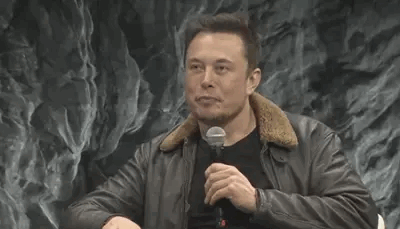
So what exactly is the Neuralink device and how does it work? The Neuralink itself is a small, thin, circular device, approximately 3cm in diameter. A similar size to that of a coin. Attached to it are over 1000 electrodes (tiny wires) which are then placed into and throughout the users brain. Yes you read that right.
To place the electrodes throughout the brain, Neuralink has developed its own very precise robot to complete the operation. This is to ensure safety and remove the risk of any possible human error. Specifically, to make sure all veins and arteries are avoided when the electrodes are placed in the brain, thus not inducing any degree of trauma. “For version one of the device, it will basically be implanted in your skull” Musk says matter-of-factly. “Basically take out a chunk of skull, replace and put the Neuralink device in, place the electrodes threads in very carefully into the brain, before stitching it up”. The Neuralink device then replaces the previously removed piece of skull leaving only a little scar. It will have battery, bluetooth and an inductive charger so that it can stay charged and connect to your phone.
Worried you won’t like the Neuralink? It is able to be completely removed by the same robot! “You wouldn’t even know that somebody has it.”
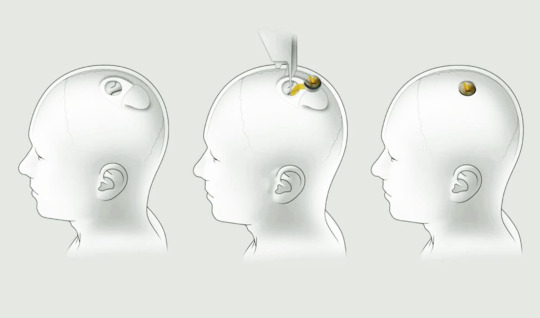
At the start Neuralink will be expensive and reserved for medical use only, with the first few iterations aiming to solve brain injuries. “It can interface basically anywhere in your brain.” Musk further elaborates “In principle it will be able to fix anything that is wrong with the brain”, including the restoration of limb functionality, eyesight and hearing. Neuralink could be used to fix many different brain injuries including severe epilepsy - by counteracting the pulse inside the brain in real time. It can also be used to aid recovery from strokes and Alziemers - by restoring memories using electrodes to stimulate parts of the brain to renew functionality. The first tests on a human are predicted to begin within the next year, after successful animal testing on pigs has occurred.
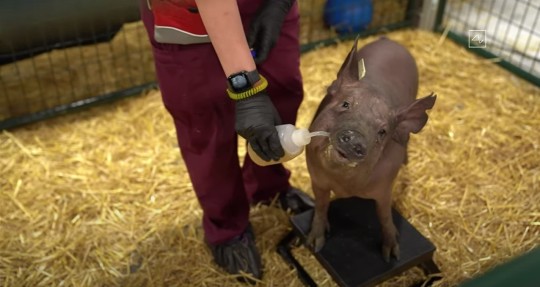
Like everything, Neuralink will get cheaper and better with time. So as Neuralink gets cheaper, what might we be able to predict for the the first consumer version of this device? This is where things get really interesting.
It is strange to think that Steve Jobs first announced the iPhone back in 2007, only 13 years ago. Since then the improvements in mobile technology have been huge. From better processing power, better batteries, and even cameras that can be used to film movies.
Musk predicts that change and rapid growth will be the same with versions of the Neuralink. According to Musk “If the development continues to accelerate, then maybe in the next 5-10 years” you will be able to convey your thoughts without any need for talking. With the use of Neuralink, Musk predicts that soon we will be able to communicate completely telepathically, allowing individuals to convey ideas clearly and accurately, without any loss in translation when communicating complex thoughts and ideas. 5-10 years!
In future versions Musk predicts that “You will also be able to save your state, like in a video game - and restore that state into a biological being”. He elaborates by giving the following analogy: “Think about how you can record a video with your phone. - There is no way you can remember things as accurately as that phone or that camera could.” You will be able to record, remember, and replay everything captured by “the entire sensory experience”. You will even be able to edit your memories and share them!
Right now, you reading this article could be a memory the like of which is replayed with the Neuralink! How likely is this to be true? According to Musk “at this point in time, I don’t have a Neuralink in my brain, so right now 0%, but at the point when you do have a Neuralink it rises”. “It will be kinda like the Matrix … Download the program” and you will be able to instantly learn anything at any time.

So what ethical problems might this create? Privacy and viruses suddenly seem a lot more intimidating when it’s your own brain doesn’t it? I for one am not smart enough to think about what malware might look like for the brain, but I know I will be paying extra for the additional Anti-Virus software!
This burgeoning technology, which can affect the brain so significantly, has the potential to exacerbate the difference between the “haves” and the “have-nots"; those with Neuralink, and those without it. Think about the difference in opportunity between someone who has a computer and internet access as compared with someone who does not; it’s that on steroids.
Neuralink will change the intellectual capabilities of humans to something previously unimaginable. It is important for us as a species to pause and consider the implications of creating technology as powerful as this.
Would I get a Neuralink? As an early adopter, probably not, and not just because I won’t be able to afford it! The fact of the matter is the first generation of all emerging technology has problems. If i’m messing with my brain I want the version I buy to last. Besides, I’d rather not be a human guinea pig. However I will wait eagerly to see how this technology will affect our species over the coming decade. Hopefully in a positive way rather than being the rise of Sky-net!
1 note
·
View note
Text
Research 09/15: Challenges in Innovation in Neurosurgery
Gamma knife
non-invasive stereotactic radiosurgery instrument that involves no scalpel or incision, does not harm healthy tissue
Treats disorders such as gliomas, meningiomas, facial nerve pain
Lasts from 20min to 2 hours
Patient is automatically moves through the Gamma Knife machine and treatment begins
From UCSF’s website: “While the treatment is administered, you will lie on a treatment couch. Your head will be held still during the session while 192 small radiation beams are focused simultaneously at the target. The size of the focal spot can be adjusted and multiple focal spots can be combined together to deliver a high radiation dose precisely to one target or to multiple targets of almost any shape, anywhere in the brain.During treatment, there's no pain. After treatment, the head frame is removed and small adhesive bandages are applied where the sterotactic frame was secured.”
Neurosurgical Innovation in the Developing World: Where Will It Come From?
Innovation is not evenly distributed around the globe - third-world countries have less access and economic advantage to make innovations
“And success breeds success, as one new idea leaps to a new level by association with another. The industrialized “first world” countries enjoy a material and intellectual advantage hardly imaginable in “third world” countries.”
Surgical treatment is designated as low-priority Ex. sub-Saharan Africa: only one neurosurgeon per 7 million people
Lack of funding and basic utilities (electricity, running water, transportation) create barriers in economically underdeveloped countries to establishing surgical facilities in remote areas
One solution of making neurosurgical innovation more accessible: telemedicine
“Telemedicine, for instance, can provide the capability for a “virtual specialist” to offer real-time surgical guidance from a remote location, to conduct large group or individual instruction from a distant site, and to direct diagnostic and therapeutic care of acute stroke via teleconferencing.”
https://journalofethics.ama-assn.org/article/technological-innovation-and-ethical-response-neurosurgery/2015-01
Neurological advancements
Brain-computer interface: motor control of robot prosthetics is achieved through nonpenetrating electrode arrays
Cognitive prosthetics - improve new memory encoding
Nanomaterials - direct connections between a single neuron and a device
“Would a future direct neuroelectronic interface with neuroanatomic networks that influence our conscious and subconscious minds make us something other than human?”
The Need for Cost-Effective Neurosurgical Innovation—A Global Surgery Initiative
Of the 250 million surgical procedures done worldwide annually, only 3.5% are performed on the poorest one-third of the world's population
Among the 44 essential neurosurgical procedures, only burr hole evacuation of subdural hematoma was listed
Solution: transfer knowledge, technique, service, and skill
Project could build off of this?
Access to cost-effective technology - barrier to global neurosurgery.
“Many of the expensive instruments and implants used in the developed world are not available, or appropriate for use in underdeveloped areas of the world.”
Ex: “Dr. Benjamin Warf has reported the success of endoscopic third ventriculostomy (ETV) with and without choroid plexus cauterization (CPC) in Ugandan children with hydrocephalus”
Patient follow-up after treatment for neurosurgical pathology also represents a significant issue in the developing world. This is often attributable to travel and financial constraints, but also to sociological norms, cultural expectations, and lack of trust.
1 note
·
View note